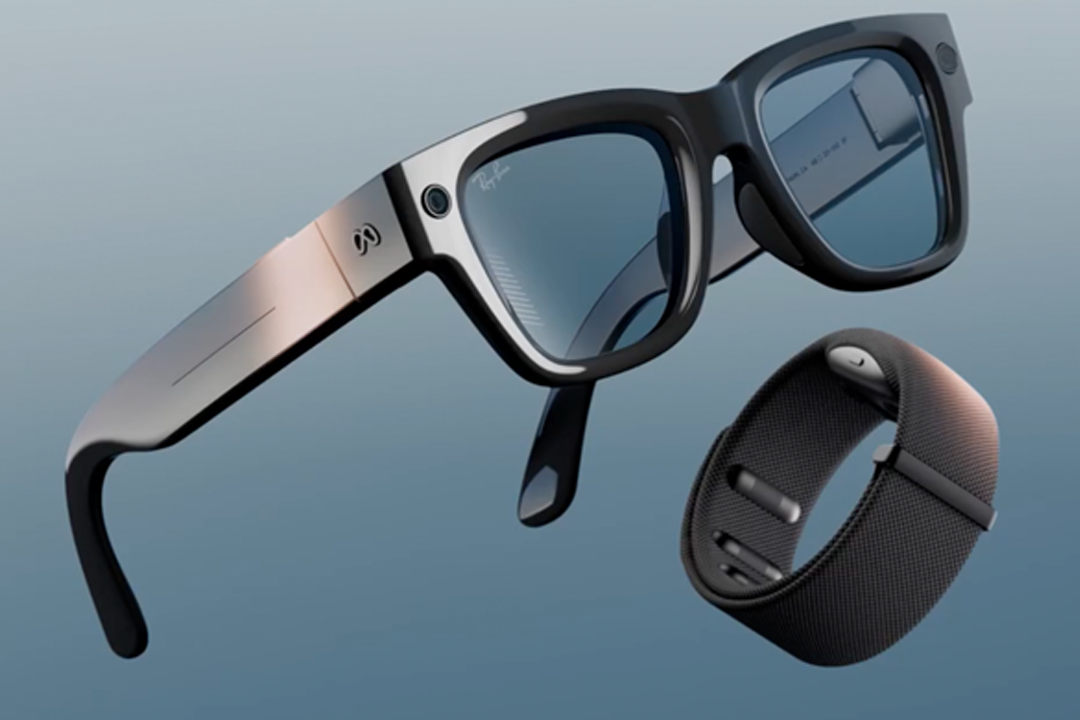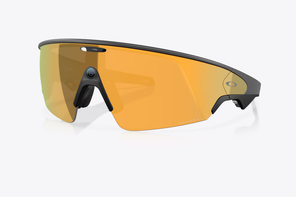Meta’s new Ray-Ban smart glasses come with a built-in display – here’s what to know
The all-new Ray-Ban Meta display launches in the U.S. later this month, but those in the UK will have to wait a little longer

Tech titan Mark Zuckerberg has been teasing a pair of smart glasses with an in-built display for months, and at last night’s Meta Connect, he finally unveiled them.
The Ray-Ban Meta display are Meta’s first smart glasses with a built-in micro-LED screen in the right lens, allowing you to stream, follow map directions, take calls and more. It’s controlled using a new wristband that can pick up subtle finger movements. They launch later this month in the U.S., but UK customers will have to wait a little longer to get their hands on them.
They weren’t the only smart glasses unveiled at Meta Connect. Zuckerberg also announced a second-generation pair of Ray-Ban Meta glasses with a new 12MP ultrawide camera, 3K video capture and better battery life, as well as a new pair of Oakleys that link up with Garmin smartwatches and Strava, automatically recording footage when your watch detects certain stats.
Here’s everything you need to know about the Ray-Ban Meta Display smart glasses, the Ray-Ban Meta gen 2 and the Oakley Meta Vanguard, including release date and price.
Ray-Ban Meta Display: Release date

The Ray-Ban Meta display glasses will launch on 30 September in the U.S., but you’ll have to wait until next year to get your hands on them in the UK. Meta says they will launch in early 2026 in the UK, France, Italy and Canada.
As for the Ray-Ban Meta gen 2, those are already available to buy now in the UK. The new Oakley Meta Vanguard smart glasses can also be pre-ordered now, and will launch on 21 October.
Ray-Ban Meta Display: Price
The Ray-Ban Meta display glasses cost $799 (£580) in the U.S., which includes the neural band wristband. That’s more expensive than Meta’s virtual reality Quest 3 and Meta Quest 3S. The company hasn’t revealed UK pricing yet, but I’m expecting it to be in line with the US launch when they eventually arrive in 2026.
The Ray-Ban Meta gen 2 start from £379, which is the same price as the first-generation Ray-Ban Meta smart glasses that launched in 2023.
The Oakley Meta Vanguard are slightly pricier. They cost £499, which is £100 more expensive than the previous Oakley Meta HSTN range, which started at £399 in the UK, topping out at £479 for the higher-end lenses.
Ray-Ban Meta display: What’s new?

Unlike the previous Ray-Ban Meta smart glasses, which are basically cameras and speakers built into a frame, the new design actually allows you to see things through a screen in the lens.
The micro-LED display sits in the right lens. On stage, Zuckerberg said it’s sharp enough to read text and bright enough to use in daylight. Meta says it’s 600px x 600px with a 20-degree field of view, running at 90Hz (though most content plays closer to 30Hz).
You won’t be watching films on your face. It’s more of a heads-up display built into your glasses. Meta says you can stream Instagram reels, see the person you’re calling on WhatsApp or Messenger, read captions as someone’s speaking, follow turn-by-turn directions or check what song’s playing. When it’s not in use, the display fades away so it doesn’t sit in your vision the whole time.
The glasses can also act as a camera viewfinder, showing you what the lens is seeing before you take the shot, fixing one of the annoyances I had with the previous Ray-Ban Meta glasses. I never knew if I was pointing my head in the right direction to perfectly frame the picture.
To control it, there’s a new neural band wristband, which uses sensors to detect tiny muscle movements in your hand. Meta showed how you could pinch your fingers, twist your wrist or even trace letters on a surface to type, all without ever touching the glasses.
The glasses last around six hours on their own before needing a recharge, with the chunky case adding roughly another 30 hours. The neural band has its own battery and is said to last up to 18 hours.
The Ray-Ban Meta display comes in two colours – classic black or a beige sand finish – and ships with transitional lenses as standard. Prescription options will also be available.

Ray-Ban Meta glasses gen 2
The second-gen Ray-Ban Meta glasses have a new 12MP ultrawide camera and can record 3K video (which is around 30fps in that mode). Meta also says battery life has been boosted to up to eight hours of typical use. They start at £379, the same price as the originals, and are available to buy now in the UK.
Meta is also adding some software upgrades. Conversation Focus will help boost the voice of the person you're talking to and quieten background noise, and live translation is being expanded with more languages and offline packs for translation without wifi.
On the capture side, slow-motion and hyperlapse recording modes will arrive via updates – effects you apply to your clips afterwards when you save or share them. There are more colours to choose from as well, in the same wayfarer, skyler and headliner designs.

Oakley Meta Vanguard smart glasses
The Oakley Meta Vanguard are the pair for athletes. They’ve got a wraparound frame with a centred 12MP camera and a wider 122-degree field of view. They’re built for use while on outdoor runs, bike rides and training sessions. They’re tougher than the Ray-Bans too, with IP67 water and dust resistance, and last longer, with up to nine hours of battery life.
The audio has also been improved. They feature louder speakers than the previous Oakley HSTN, and the new five-mic array is designed to cut through wind noise, so you’ll always be heard when training outdoors. Like the Ray-Bans, they’ll also get slow-mo and hyperlapse recording modes via a software update.
The most interesting part is that they now work with Garmin smartwatches and Strava. You can start a recording the usual way – with the button on the frame or by saying “Hey Meta”. The glasses can also be set to auto-capture clips when you hit certain milestones in your workout, such as a spike in heart rate, climbing elevation or a distance target. You can then sync footage and overlay your stats from Garmin or Strava.
The glasses are currently available to pre-order for £499 for shipping on 21 October.
Prefer virtual reality? We’ve rounded up the best VR headsets to buy now
Bookmark popover
Removed from bookmarks